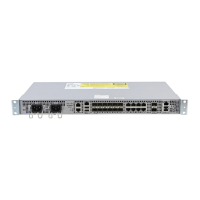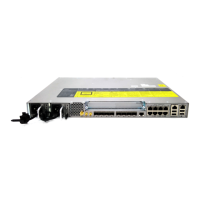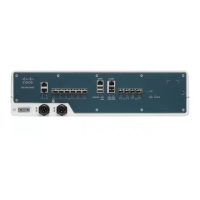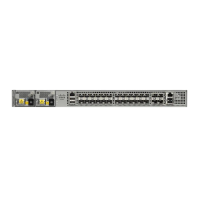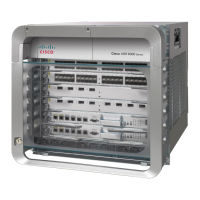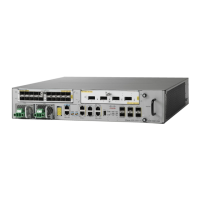Step 3 Unlock and remove the SFP module, as shown in the following figure.
If the module has a bale-clasp latch, pull the bale out and down to eject the module. If the bale-clasp latch is
obstructed and you cannot use your index finger to open it, use a small, flat-blade screwdriver or other long,
narrow instrument to open the bale-clasp latch.
Figure 13: Removing a Bale-Clasp Latch SFP Module
Step 4 Grasp the SFP module between your thumb and index finger, and carefully remove it from the module slot.
Step 5 For fiber-optic SFP modules, insert a dust plug into the optical ports of the SFP module to keep the optical
interfaces clean.
Step 6 Place the removed SFP module in an antistatic bag or other protective environment.
Connecting to the Copper Ports
Copper ports [0:7] are capable of working 10/100/1000 Mbps.
The router copper ports configure themselves to operate at the speed of attached devices. If the attached ports
do not support autonegotiation, you can explicitly set the speed and duplex parameters. Connecting devices
that do not autonegotiate or that have their speed and duplex parameters manually set can reduce performance
or result in no linkage.
Note
To maximize performance, choose one of these methods for configuring the Ethernet ports:
Installing the Cisco ASR 920 Series Router
15
Installing the Cisco ASR 920 Series Router
Connecting to the Copper Ports

